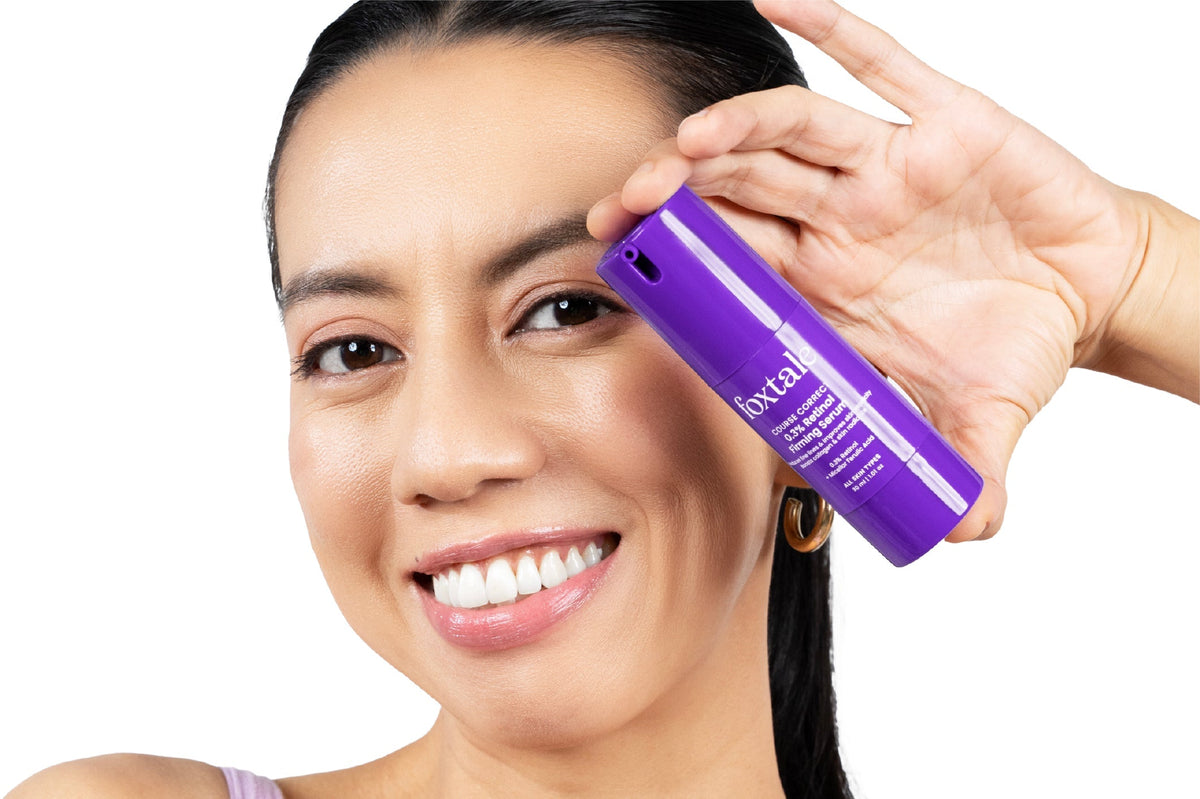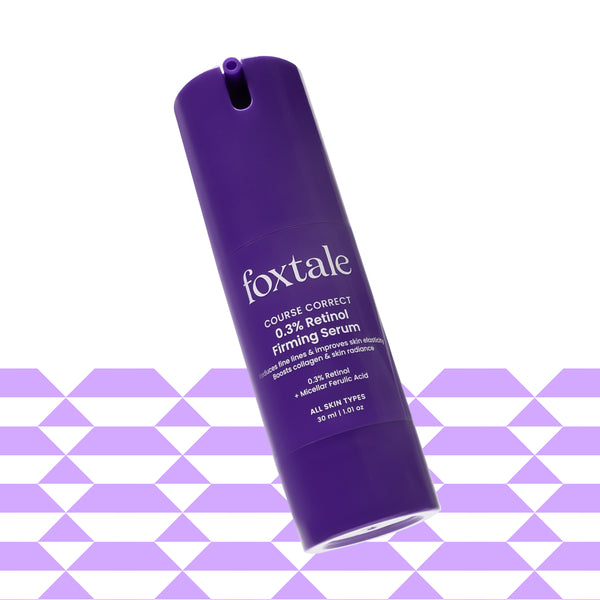
Retinol is highly regarded in skincare circles and for good reason. Dermatologists often recommend Retinol to tackle fine lines, uneven tone, and dullness. If your skin leans dry, though, you’ve probably heard mixed reviews about whether it’s right for you. The truth? Dry skin can benefit from Retinol, but only if you introduce it carefully and support it with the right products.
This guide walks you through what Retinol does, how to apply it without making dryness worse, and which formulas are worth your time.
What Is Retinol and How Does It Work?
Retinol is a Vitamin A derivative that changes the way skin behaves on a cellular level. Once applied, enzymes in your skin convert it into Retinoic acid, which then communicates directly with skin cells.
That’s when the real work begins. Retinol speeds up how quickly old cells shed and new ones rise to the surface. Over time, this helps soften lines, fade spots, and smooth out rough texture. It also nudges your skin to produce more Collagen—the protein responsible for firmness and elasticity.
This process can be a little demanding on your skin in the beginning. Some dryness or flaking is normal at first, especially if you’re new to Retinol. It doesn’t mean the ingredient isn’t right for you—it simply means your skin is adjusting.
Is Retinol Good for Dry Skin?
So, the question that keeps circling around is whether or not Retinol is good for dry skin. Well, the answer is that it can be but as long as you approach it with care.
Dry skin lacks enough natural oils to hold moisture effectively. Retinol, with its ability to speed up cell turnover, can temporarily highlight that lack of hydration if you’re not careful. That’s why many people with dry skin worry about peeling or tightness.
When paired with nourishing ingredients, Retinol helps smooth rough patches, brighten a dull complexion, and even strengthen the barrier.
How to Use Retinol Serum for Dry Skin
Application makes all the difference. Here’s how to make retinol work for your skin without unnecessary irritation.
Step-by-Step Guide
1. Cleanse gently. Stick to cream or oil-based cleansers that won’t strip moisture.
2. Dry completely. Always apply Retinol to dry skin. A damp surface increases the risk of irritation. If you’ve wondered, should Retinol be applied to dry skin?—yes, it should.
3. Moisturizer first (optional). If your skin is very dry, use the “sandwich” method: apply a light layer of moisturizer, then Retinol, then finish with another moisturizer layer.
4. Apply retinol serum. Use no more than a pea-sized amount for your entire face. Spread it evenly, steering clear of sensitive areas like the corners of your nose, mouth, and eyes. A balanced option is this Retinol serum, which also contains Ferulic Acid for added antioxidant support.
5. Seal with moisturizer. Finish with a rich cream containing Ceramides, Hyaluronic Acid, or Shea Butter.
Frequency
When you’re just starting out, limit use to once or twice a week at night. After two to three weeks, increase to every other night if your skin seems comfortable. Some people eventually reach three or four nights a week. Daily use isn’t necessary for results, and for dry skin it’s rarely practical.
If redness or peeling appears, cut back. Consistency matters more than speed.
Choosing the Right Retinol for Dry Skin
Finding the right product is just as important as how you apply it.
Concentration
For dry skin, stick with lower strengths at first—around 0.1% to 0.3%. These levels deliver results but keep irritation manageable. Once your skin builds tolerance, you can explore slightly higher strengths, though many people get what they need from the lower end. Retinol for beginners should always start slow.
Supportive Ingredients
Look for formulas that don’t just rely on Retinol. Supporting ingredients make the difference between irritation and progress. Some to watch for:
- Hyaluronic acid for hydration.
- Ferulic acid for antioxidant support.
- Ceramides to reinforce the barrier.
- Glycerin to help skin hold water.
A formula that blends Retinol with these hydrators will feel much more comfortable on dry skin.
Tips for Minimizing Irritation
Even with the right product, your skin might react if you’re not careful. Here’s how to reduce that risk.
1. Don’t Mix with Strong Actives
Avoid layering Retinol with strong exfoliants like Glycolic, Lactic, or Salicylic Acids. The same goes for Vitamin C serums—keep them for the morning. Combining too many potent actives in one routine is asking for trouble.
2. Always Wear Sunscreen
Because Retinol makes your skin more sensitive to UV rays, sun protection is essential. Apply broad-spectrum sunscreen every morning, even if you’re indoors. For dry skin, cream-based formulas often feel more comfortable than gels.
3. Listen to Your Skin
Mild flaking or tightness can happen, but if you see persistent redness or irritation, scale back. Take a break for a few days, then reintroduce Retinol slowly. If your skin still reacts, check in with a dermatologist for advice.
Conclusion
Retinol can absolutely work for dry skin—you just need the right approach. Apply it to dry skin, buffer it with moisturizer, and start with a low-strength formula. Use it a couple of nights a week, pair it with hydrating ingredients, and always wear sunscreen. With steady, thoughtful use, Retinol can smooth, brighten, and strengthen your skin without sacrificing comfort.
FAQs
Can Retinol be used on dry skin?
Yes. Apply it to dry skin, start with low strength, and pair it with plenty of hydration. That’s how you make it work without worsening dryness.
Can I use Vitamin C and Retinol together?
Use Vitamin C in the morning and Retinol at night to prevent irritation and enhance effectiveness.
What is Retinol used for?
Retinol is used to improve texture, reduce fine lines, fade dark spots, and stimulate Collagen. It’s one of the most researched ingredients for visible, long-term skin renewal.
Can Retinol be used daily?
Not at first. Begin with once or twice a week and gradually increase. Some people with dry skin never need daily use—three or four nights a week can be enough.




